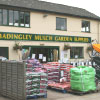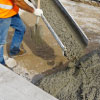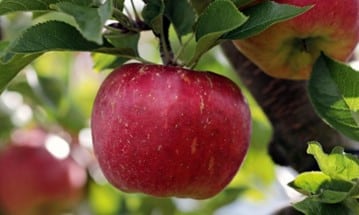Top Tips for Looking After Fruit Trees
Have you thought of planting your own fruit trees? It is one of the UK’s growth industries, in every sense of the word. The need for more sustainable gardens, and the chance to cut your own food bills, means that increasing numbers of people are ‘growing their own’.
Madingley Mulch stock a variety of soil conditioners and composts for gardeners in Cambridge and across East Anglia. Here are our top tips for planting out your own fruit trees, particularly if you have a small garden and only have space for one or two trees, rather than a whole orchard.
Don’t Plant Too Low – or Too High
Frost is the single biggest problem for fruit trees. Cold air is heavy and slides downhill, so keep any trees out of dips, valleys, hollows and sheltered flat ground. Because cold air displaces warmer air, the warmest spots at night tend to be 100-300 feet above sea level on a slope away from the prevailing wind. Equally, don’t plant your tree or trees on top of a slope because this could make them more exposed to wind and other bad weather, preventing pollination of the fruit and, in worst cases, causing structural damage.
The best place to plant – particularly for grapes, peaches, nectarines and apricots – is usually facing south to south-west on relatively level ground. Some fruit, such as gooseberries, redcurrants and whitecurrants, can tolerate being grown in north- or east-facing spots.
Wait for Your Fruit
Don’t expect instant fruit for your dining table, as you may have to wait a while. This is because you want the tree to develop a strong network of roots and branches so it can produce a regular supply of high-quality fruit.
In the case of apples, it’s usually three years, and in the case of plums, cherries and pears, it tends to be four. You may also find that if you have a particularly good harvest one year, it won’t be as good the following year, while the tree recovers.
Prune Them
You should always be on the lookout for any dead wood, branches or growth on your plants. Cutting this off at any time of year, as this will help promote growth further down the line.
The best time to have a major structural cutback is in the autumn or early winter as the tree will be dormant, but it won’t be freezing, so the remainder of the plant won’t be damaged by frost.
Protect Them from Pests
Some trees that suffer from scab diseases are best controlled by vigorous pruning of infected areas. Pellets containing metaldehyde or ferric phosphate, sprinkled on the soil, can deter slugs and snails, and cloches and fleeces will also protect your fruit from hungry pests. With rabbits, you may have to consider wire mesh or netting, or fences if you have a particularly serious problem.
Mulch Them
The worst soil is potter’s clay in a low-lying area that is underwater all winter and brick hard all summer – and, sadly, that is what most of the soil is like in our immediate area and across the East of England.
Fruit tree roots need to breathe and have access to water to help swell their fruit. Good soil texture helps moisture retention (but you may need to water them anyway, particularly in the early stages). Your trees will also benefit from organic matter with plenty of well-rotted manure and leaf mould, so using a mulch will help conserve moisture in summer and stop weeds growing up and around your trunks or stems.
At Madingley Mulch, we can give nature a helping hand with a variety of soil conditioners and composts that we stock. These include Denise’s Delight and Tony’s Tonic, both of which are exclusive to us.
Soil Conditioners in Cambridge from Madingley Mulch
As well as our soil conditioners and composts, we also stock a variety of garden tools which can help with any digging and pruning which you might need to do.
If you need any outdoor gardening supplies, then you can order them from our online shop and you can also visit our base on the edge of Cambridge, where we will be happy to offer advice too.
Back to blog




